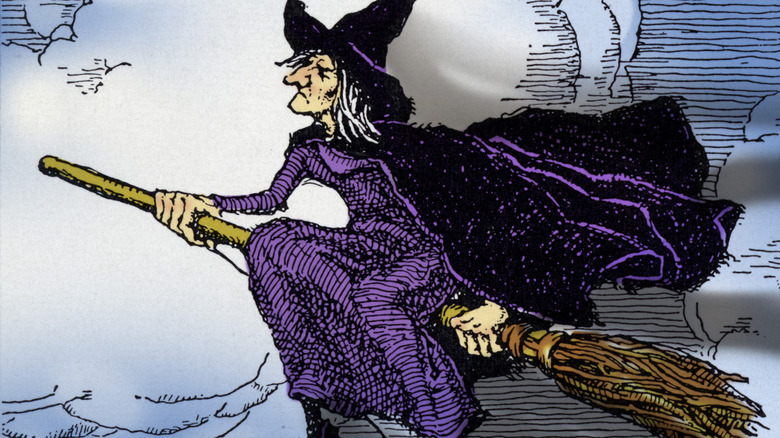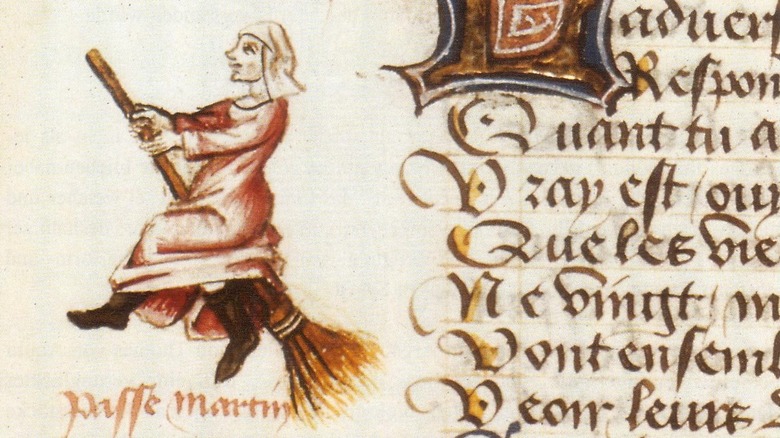The Legend Of Witches Flying On Brooms Explained
Witches flying through the air on brooms is an iconic image associated with Halloween. But how did the two — witches, brooms — become associated with one another? It's hard to say, since both have folklore reaching back hundreds of years. Most trace the origin of Halloween to the ancient Celtic holiday of Samhain, a time in which people gathered their last harvest of the year. This was also a time of year when people would communicate with the dead. Over time, other supernatural beings, such as witches and sprites, were attached to the holiday (via Live Science).
Witches seem to have a history that goes back further. One of the first women to be called a witch was Medea, identified in Greek mythology, but the notion of a magic-practicing, spell-casting witch came into focus in the Roman period, when witches were said to commit such atrocities as mutilating corpses and eating the eyeballs of the dead, per The Conversation. But where does the idea of a witch riding a broom come from?
Rubbing a staff with a flying ointment
One theory about witches taking to the sky on broomsticks involved something called a "flying ointment." The idea comes from a magician, Abramelin, who in the 13th century wrote about witches (presumably) rubbing a blend of herbs and oil or fat on a staff and then riding it. Abramelin also explained that sometimes the women would rub the mixture "under the arms and in other hairy places." The salve might have included the hallucinogenic Mandragora plant, which might have given the women the impression that they were flying on their staffs (via Psychology Today). Perhaps once word of these experiences spread, the idea may have stuck.
A book from the era seems to back up this idea that women accused of being witches rubbed something on a staff-like object. "Irish Witchcraft and Demonology" includes a section (posted at the Internet Archive) about Dame Alice Kyteler, who was accused of sorcery around 1324. When her house was raided, authorities found "a pipe of ointment, wherewith she greased a staffe, upon which she ambled and galloped through thicke and thin."
A mingling of ideas
Another idea accounting for witches riding brooms goes back to 1451, when French poet Martin Le Franc wrote a book titled "Le Champion des Dames." The book contains a margin drawing of two women thought to be Waldensian witches (per World History Encyclopedia). One is straddling a broom (above), and the other is riding a plain stick. According to World History, the Catholic Church declared Waldensians heretics in the 16th century, but they might not have been witches. Instead, they were a group of Christians who rejected Catholic teachings during the 12th century, which resulted in persecution, excommunication, and even execution in some instances (via Britannica)
But why are the women in the artwork straddling these items? There is no way to know for certain, but History suggests that it might have something to do with different ideas merging over time. In this case, farmers during this era would perform rituals and dance with brooms and pitchforks between their legs in hopes for a bountiful harvest. Over hundreds of years, this odd dance would later become blended with the idea of witches flying on brooms.


